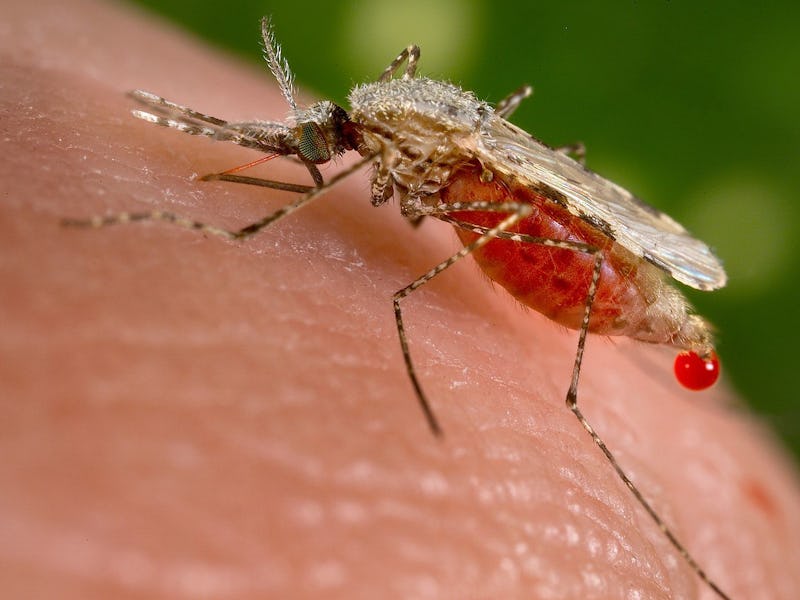Could This Vaccine Stop Malaria Before It Starts?
More than 30 different development efforts are currently underway.

By Simon Kariuki, Kenya Medical Research Institute
More than 30 malaria vaccine candidates are at various stages of development. The RTS,S vaccine is at the most advanced stage.
The World Health Organisation has recommended the introduction of the vaccine in Ghana, Kenya and Malawi as a pilot programme to assess its suitability in expanded immunisation programmes.
The vaccine could prove to be a powerful tool in sustaining the gains made in the last decade in reducing malaria related cases and deaths. Between 2000 and 2015, new malaria cases fell by 37% globally, and by 42% in Africa. This has been achieved through key interventions such as using treated bed nets, spraying houses with insecticides and effective antimalarial drugs.
Combined with existing malaria interventions, the vaccine would have the potential to save tens of thousands of lives in Africa. It’s important for two other reasons too.
Firstly, it would reduce the cost of managing malaria. Historically, vaccines are more cost-effective in preventing the spread of diseases compared to other methods.
The Vaccine’s History
The RTS,S malaria vaccine was created in 1987 by scientists working at GlaxoSmithKline laboratories. Early clinical development of the vaccine was conducted in collaboration with the Walter Reed Army Institute for Research.
In January 2001, GlaxoSmithKline and PATH’s Malaria Vaccine Initiative entered into a public-private partnership to develop RTS,S for infants and young children living in malaria-endemic regions of sub-Saharan Africa.
Phase I and II clinical trials allowed an initial assessment of the safety and efficacy of the vaccine, initially in adult volunteers in the US and Belgium.
This was followed by adults, adolescents, children, and then infants living in malaria-endemic regions in Africa.
The results from the Phase II proof-of-concept trials in Mozambique, published in The Lancet in 2004 and 2007, demonstrated that the vaccine provided partial protection against malaria to African children and infants.
This paved the way for a pivotal Phase III efficacy and safety trial in 15,459 infants and young children at 11 sites in seven African countries. These were Burkina Faso, Gabon, Ghana, Kenya, Malawi, Mozambique, and Tanzania. The trial started in May 2009 and ended in early 2014.
The results of the phase III trial were submitted to regulatory authorities and in July 2015 RTS,S received a positive scientific opinion from the European Medicines Agency.
In January 2016, the WHO recommended introduction of RTS,S through a pilot implementation programme in 3 to 5 African countries. Its recommendation called for a four dose series of the vaccine. The first dose to be administered as close as possible to 5 months of age, followed by doses two and three at one month intervals and a fourth dose 15 to 18 months after dose three.
The pilot implementation, will evaluate:
the operational feasibility of providing RTS,S at the recommended four-dose schedule, the impact of the vaccine on malaria specific deaths, andthe safety of the vaccine.
Choosing the Pilot
Ghana, Kenya, and Malawi were selected based on a number of factors. They have high coverage of long-lasting insecticidal nets, well-functioning malaria and immunisation programmes, a high malaria burden and have taken part in an earlier phase of the vaccine trial.
Because malaria can vary from one region to another – even within a country – the three countries will decide on the districts and regions to be included in the pilots. High malaria burden areas will be prioritised.
The piloting of the malaria vaccine in these three countries is a major milestone in vaccine research as it will pave way for the next steps in making decisions about whether it will be widely deployed elsewhere.
If that happens, the vaccine has the potential to play a role in reducing the malaria burden.
The vaccine is meant to complement rather than replace existing proven malaria interventions. But there’s a growing threat of malaria parasites becoming resistant to antimalarial drugs and mosquitoes developing resistance to insecticides used in bednets and indoor residual spraying.
Once it’s licensed and becomes widely available, the vaccine will be a vital new intervention that can help mitigate these developments.
The pilot provides an opportunity to evaluate the vaccine in real-life situation. The next steps will involve regulatory authorities reviewing the results and making recommendations for wide deployment.
Way Forward
The RTS,S vaccine is a first generation malaria vaccine. This means there’s still room to improve its capability to protect against malaria. But it won’t be the silver bullet which is why other studies into new drugs and interventions are important.
New prevention strategies – such as a new generation insecticide-treated nets that use a combination of insecticides to protect against mosquito resistance – are being explored. And single dose antimalarial drugs to ensure people complete the recommended dosage are also being explored.
Finally, the use of antimalarial drugs that target the sexual stages of the parasite are also being explored.
Simon Kariuki, Chief Research Officer, Malaria Branch Chief in the KEMRI, CDC and London School of Tropical Medicine Collaborative Program, Kenya Medical Research Institute
This article was originally published on The Conversation. Read the original article.